RESEARCH PROJECTS
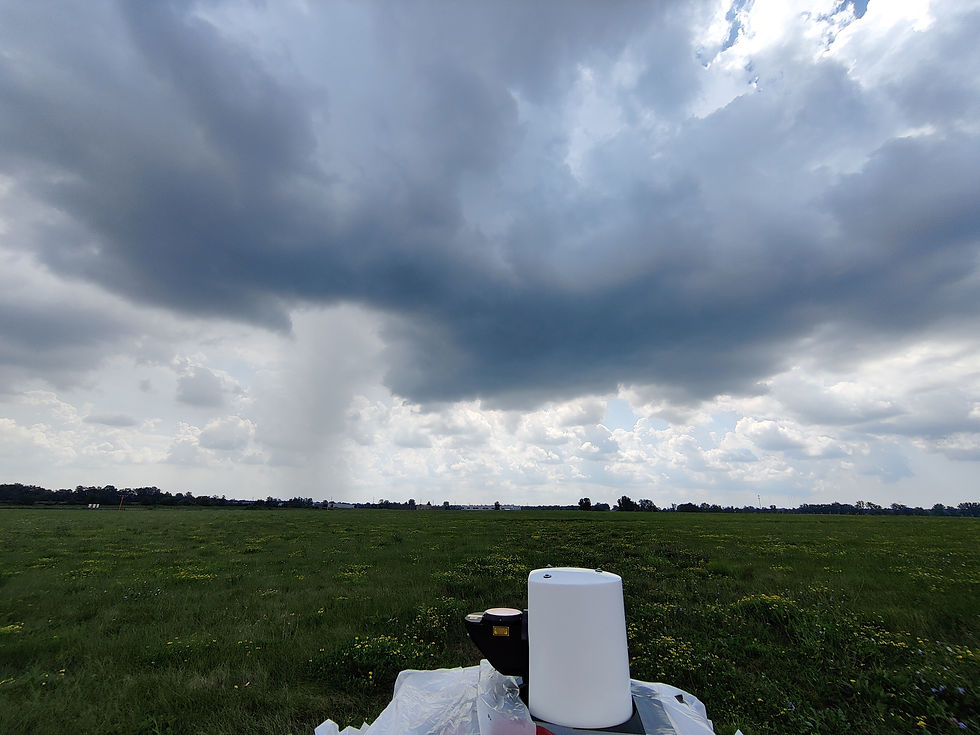
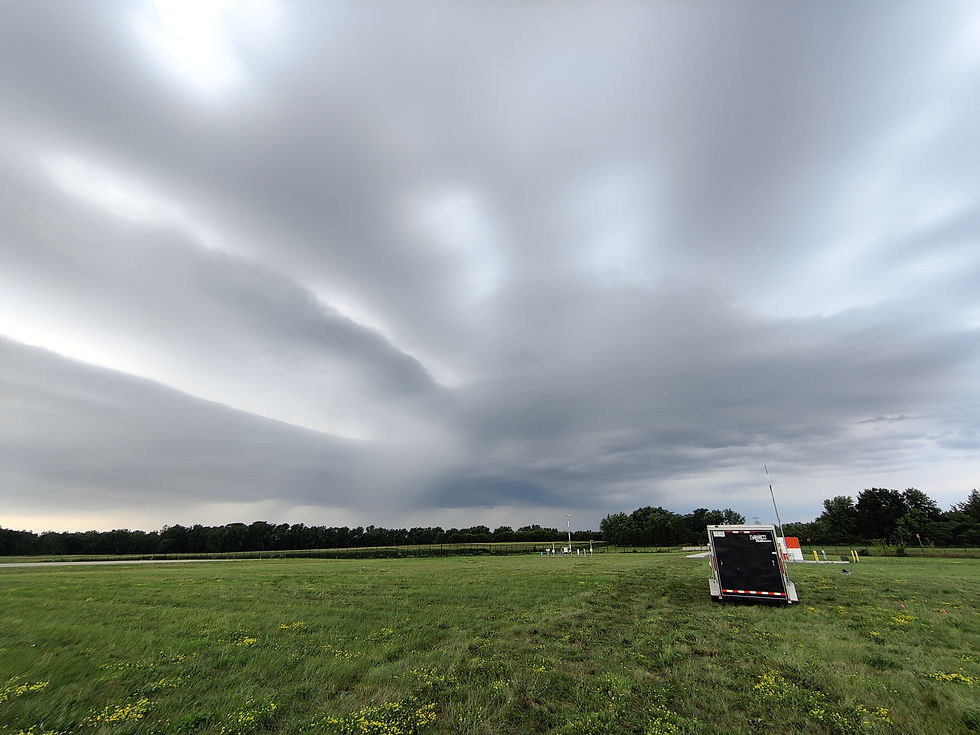


Lake Breeze Front and Convection study near Lake Michigan
Deployed the Doppler LiDAR to study lake breeze front propagation and convection near the shore of Lake Michigan.
The field campaign was conducted near Holland, MI in August of 2021.
Argonne Wind Study
Deployed Doppler LiDAR to study the wake effects behind a 9m tall building and a Bergey Wind Turbine
The goal is to study the effect of building on the turbine wake and vice versa to identify the length scales of wake propagation.
The field project was conducted in Argonne National Laboratories, Chicago, IL in July 2021

Doppler LiDAR behind the building. A Bergey Wind turbine is visible in the background that is inline with the building and the LiDAR.
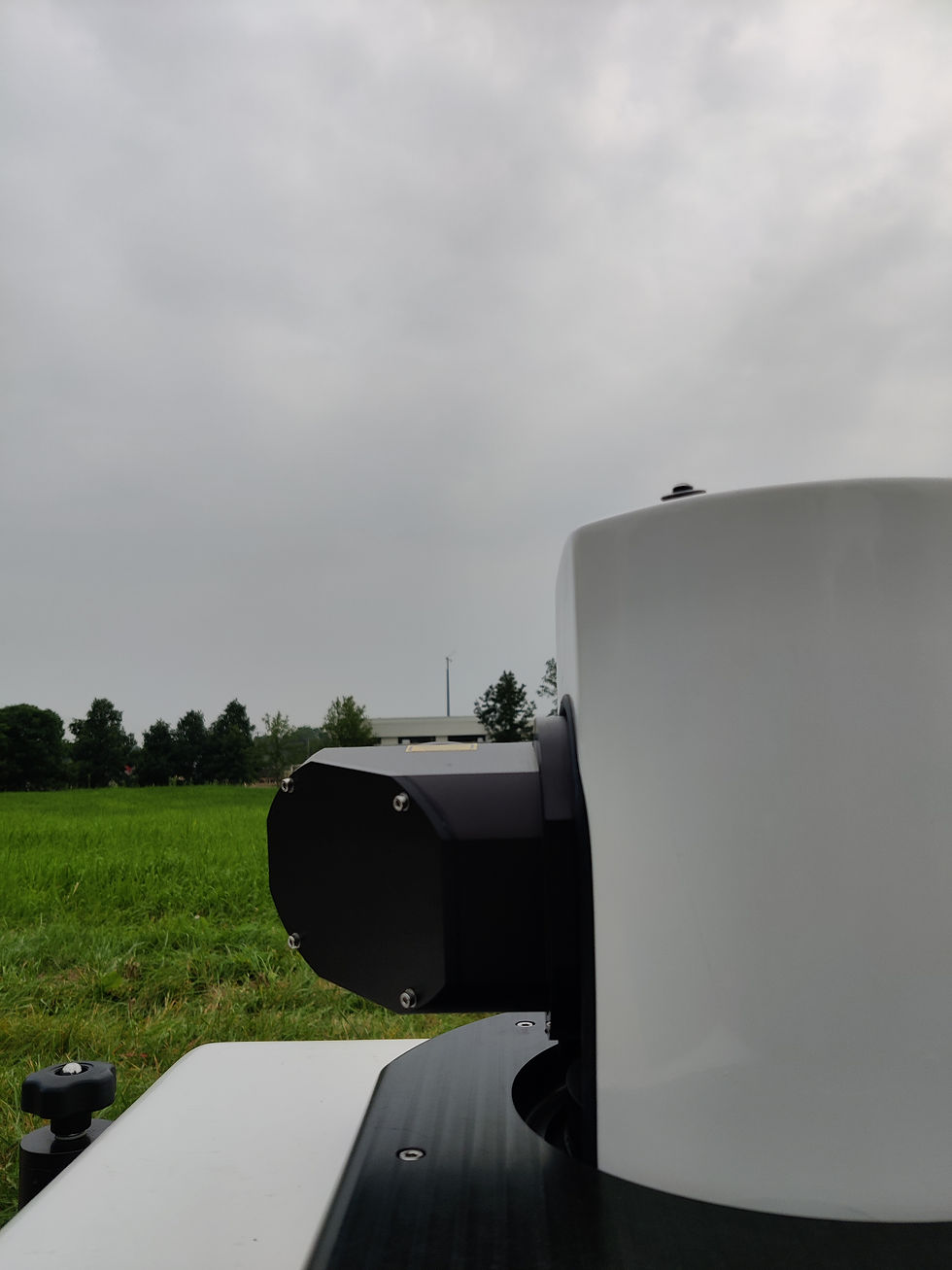


Doppler LiDAR behind the building. A Bergey Wind turbine is visible in the background that is inline with the building and the LiDAR.

OWLeS Field campaign site and sounding (Balloon + Aircraft) locations

Cloud decks visualized by LiDAR and RADAR systems onboard Aircraft

OWLeS Field campaign site and sounding (Balloon + Aircraft) locations
Entrainment study during Ontario Winter Lake Effect System (OWLeS) campaign
I am using the in-situ observations from aircraft flights and LiDAR and RADAR observations during OWLeS campaign to study entrainment characteristics and natural seeding of clouds during Winter lake effect systems.
The field campaign was conducted near Lake Erie and Lake Ontario during the Winter of 2014.
I have a manuscript under-review in the Journal of Applied Meteorology and Climatology
Stable Atmospheric Variability and Transport (SAVANT)
I am using the observations from sonic anemometers, Dustrak sensors, Flux-stations, Doppler LiDAR and Aerosol LiDAR systems to analyze the occurrence of Drainage flows over a gentle slope topography during Stable nighttime conditions.
The field campaign was conducted near Mahomet, Illinois during Aug-Nov of 2018 by UIUC, USC, UWSc and NCAR.
I recently published my work on this dataset in the Journal of Applied Meteorology and Climatology and Boundary-Layer Meteorology journals

SAVANT Field Campaign site

Instrumentation during SAVANT

Drainage flow visualization by LiDARs

SAVANT Field Campaign site

Ammonia gas with very high source Buoyancy flux released into convective boundary layer, D = source diameter = 400m.

Thermal plumes with increasing source buoyancy flux

Density Currents in Neutral and Convective atmospheres

Ammonia gas with very high source Buoyancy flux released into convective boundary layer, D = source diameter = 400m.
Large-Eddy modeling of Buoyant Plumes/Thermals in WRF-LES model
I implemented buoyant flow transport and dispersion in the default WRF framework at LES scales. This was done in two stages: First, the buoyancy of the flow is achieved by controlling the temperature at the source, second: a new variable corresponding to the plume mixture fraction is added to WRF to create a density difference with respect to the ambience.
With this ability, users can add hot gases or cold gases as the model considers buoyancy from temperature and gas density separately.
Applications: Wildfire emission transport, cold fronts, hazardous release from volcanic eruptions, etc..
**These results were presented at
72nd American Physics Society - Division of Fluid Dynamics conference (2019, Seattle, WA)
100th American Meteorological Society Conference (2020, Boston, MA) [recorded presentation]
and are published in Journal of Fluid Mechanics
and Monthly Weather Review Journal
Large-Eddy Simulations of Atmospheric Boundary Layers
I use the Weather Research & Forecast (WRF) to simulate atmospheric boundary layer conditions at Large-eddy scales.
Currently, I am simulating convective atmospheric conditions whose atmospheric stability ranges from weakly unstable to strongly unstable.
I run sensitivity analysis choosing different Initial-Boundary conditions, PBL schemes and Micro-physics schemes available in WRF
**These results were published in 2019 Atmosphere Journal
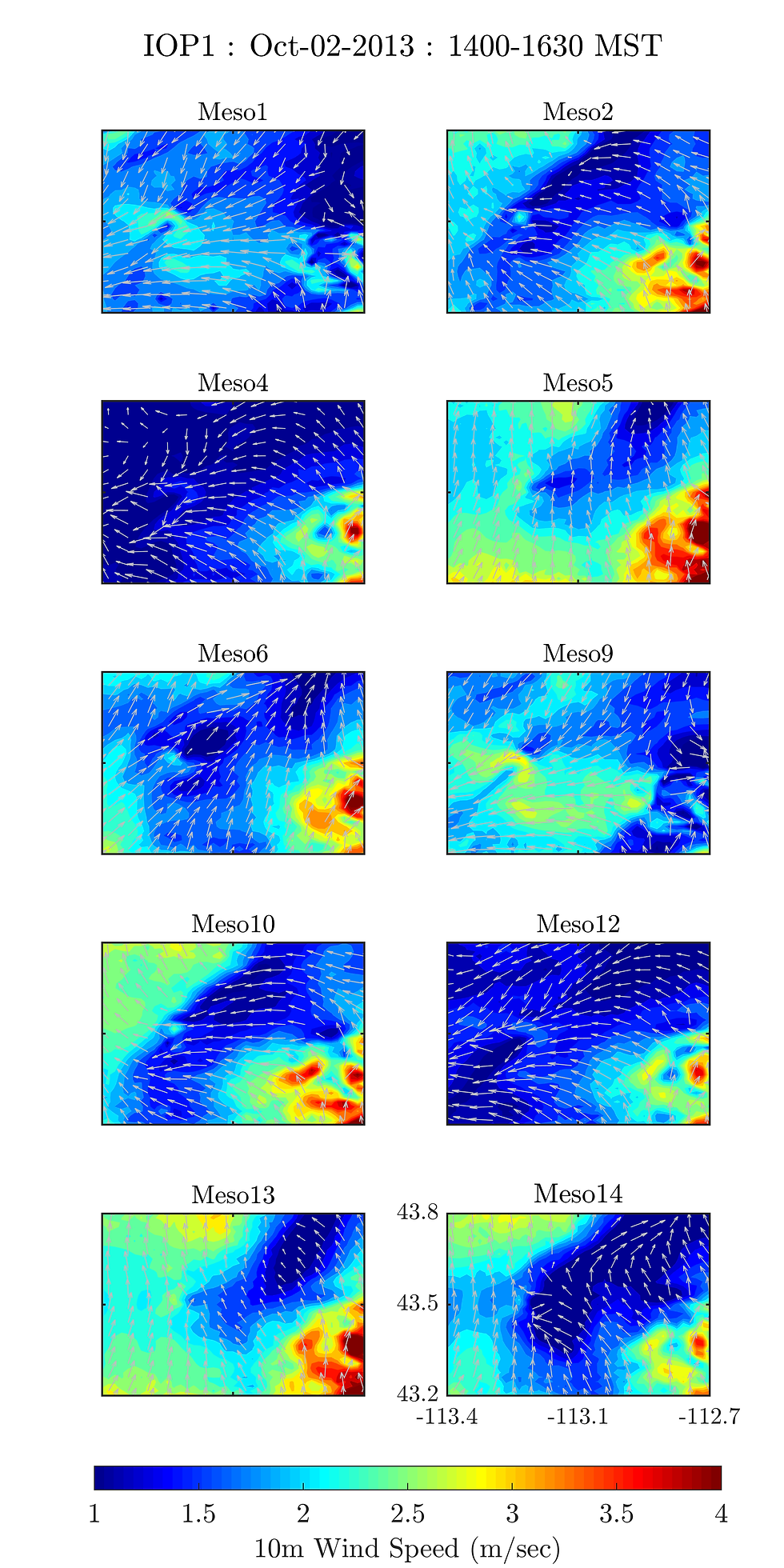
Difference in contours is due to the selection of parametrization schemes in WRF

WRF-LES simulated convective features based on the strength of atmospheric stability and wind speed conditions

Difference in contours is due to the selection of parametrization schemes in WRF

Plume movement during April 04,2017 Chemical attack in Syria

3D visualization of tracer elements in a complex terrain. Visualization is generated using NCARs Vapor 3D software.
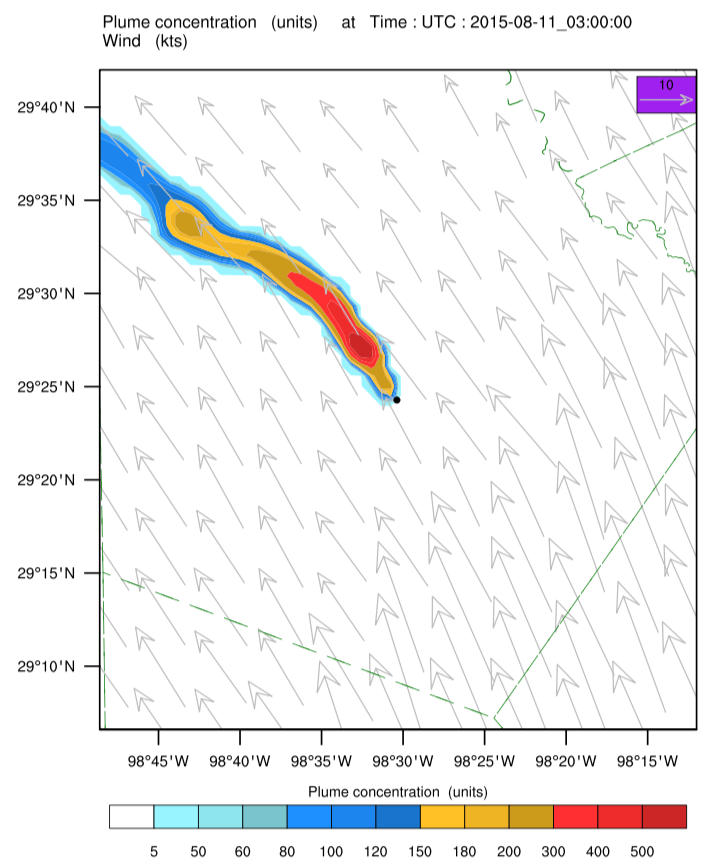
Hypothetical Release: Tracer transport in WRF

Plume movement during April 04,2017 Chemical attack in Syria
Numerical Modeling of Atmospheric Flows at Regional Scales
I use the Advance Research Version of Weather Research & Forecast (WRF-ARW) extensively to simulate convective atmospheric conditions and to study the transport and dispersion of passive scalars released into the atmosphere. For this, I have modified the WRF source code to allow the user to specify the tracer release location and time.
My usual set of options for running WRF are:
-
Initial and Boundary conditions: NCEP - NAM ANL (or) HRRR operational
-
PBL Scheme: YSU scheme with top-down-mixing turned on (or) MYJ Scheme for TKE
**These results were published in
Natural Hazards and
Atmospheric Pollution Research Journals
Buoyant plume study in a Gas Chamber
For understanding the physics of buoyant jets, I have designed a laboratory scale gas chamber which can accommodate a different type of source apparatus and sensing platforms.
Currently, our group is studying the concentration distribution in buoyant forced plumes. Multiple Sensors are being used to record the temperature data and I've set-up a low-cost Schlieren Imaging apparatus to visualize the plume.
**These results were presented at 2018 APS-DFD annual meeting
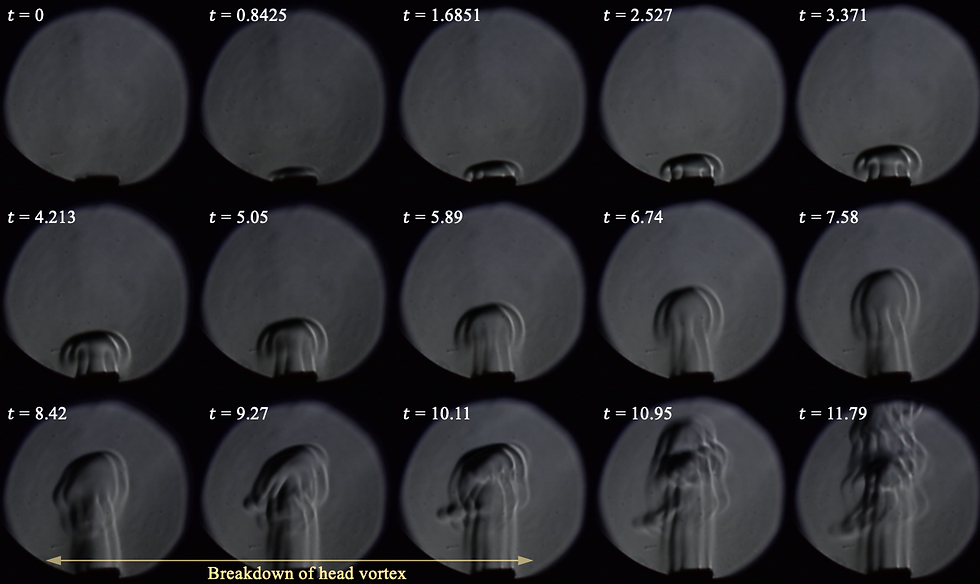
Schlieren Imaging of formation and breakdown of head vortex for a negative buoyant jet
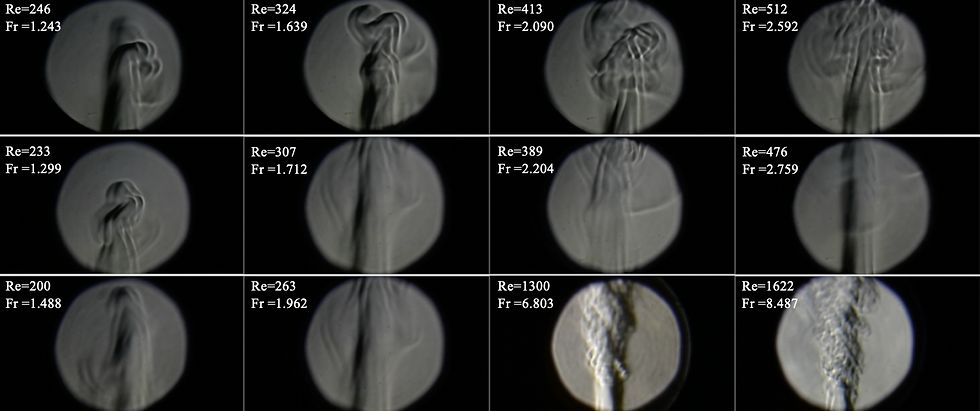
Schlieren imaging of various negative buoyant jets and transformation to turbulent flow at higher Reynolds number

Schlieren Imaging of formation and breakdown of head vortex for a negative buoyant jet
Development of Mobile Sensing Platform for recording Meteorological data
This one is the most interesting of my works. The primary goal is to measure the meteorological variables like sensible surface heat flux, skin surface temperature, pollution, wind and temperature profiles near the surface. With the help of an Undergraduate Research Assistant, we made a mobile sensing platform using a general tripod assembly.
Currently, we are testing the validity and reliability of the sensors.
Large-Eddy Simulations of Buoyant flows in calm environments
I use OpenFOAM (versions 2.2.x,4.1,5.0), an open-source C++ based platform consisting of pre-compiled solvers for fluid dynamics problems, for my LES simulations. Initially, I have struggled with understanding the framework of OpenFOAM.
Reasons I like OpenFOAM for:
-
It is open-source. Very easy to compile, if we follow all the steps given in installation instructions
-
Easy to modify existing solvers, so that you can create your own version of the solver for a particular application. In my case, I started with the transport equation of temperature and converted it to density transport to simulate Boussinesq flows
-
Easy to write user-defined functions for averaging sort of operations
**These results were presented at 2016 APS-DFD annual meeting

Three buoyant gases dispersed into calm environment at same Re number
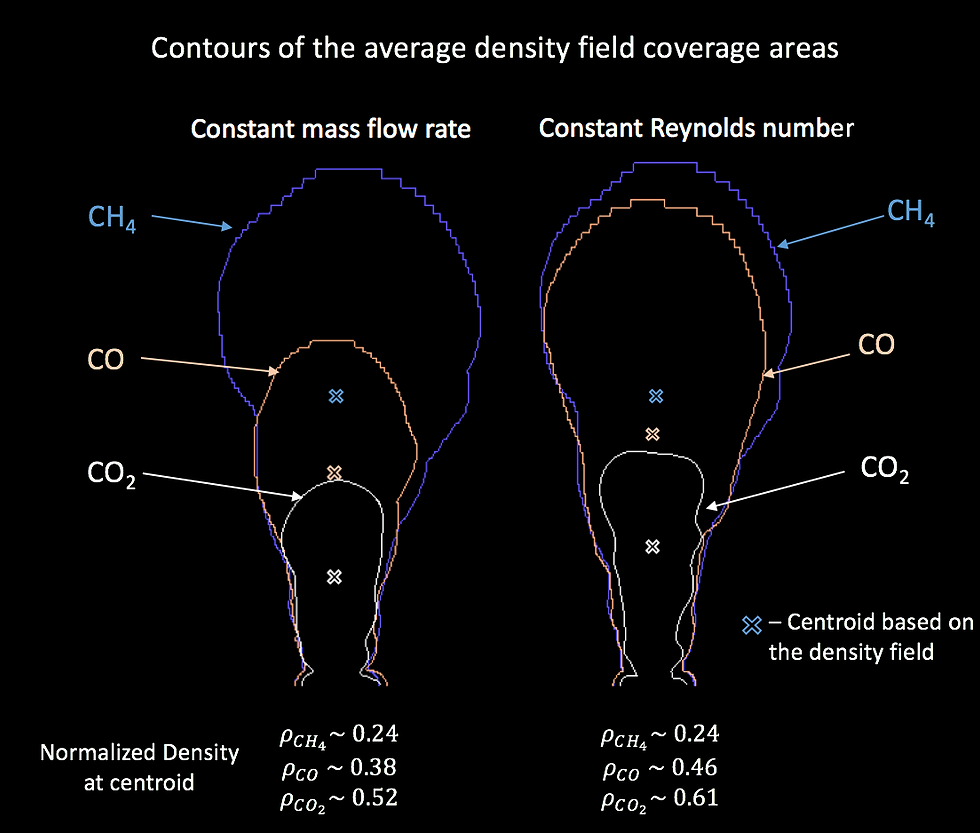
Comparison of buoyant gas development released at same mass flux and same Re number

Planar Buoyant Jet similarity variables

Three buoyant gases dispersed into calm environment at same Re number
CFD of UAV Rotors

Our group studied the rotor dynamics of a drone using ANSYS Fluent.
The objective is to identify the stagnation points below the rotor and to quantify the turbulence created by its motion at various RPMs.

Velocity vectors on the glider surface
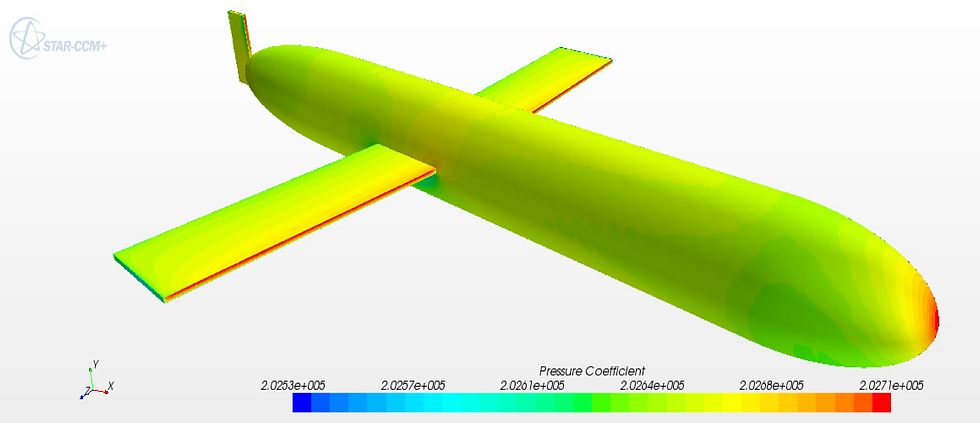
Cp for 50deg Sweep angle and 100 deg Angle of Attack with 0.25 m/sec speed

Comparison of velocity field near the glider for rudder attached and detached to the glider body

Velocity vectors on the glider surface
Hydrodynamic Design & Fabrication of Underwater Glider
During my Masters, I worked on a project that dealt with Autonomous Underwater Gliders (UAV). For that, I performed hydrodynamic design on a fixed wind UAV using StarCCM+ CFD software. Optimized the dimensions, shape factors and instrumentation that goes into the glider to meet the design & performance criteria.
Finally, the glider is fabricated and deployed in the water tank located in our department.